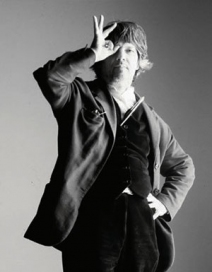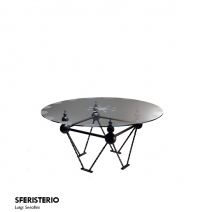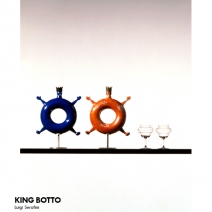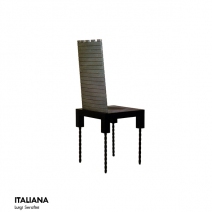Luigi Serafini

Luigi Serafini Nato a Roma nel 1949 è un artista, architetto e designer italiano.
È famoso per le sue opere stranianti e misteriose, come il Codex Seraphinianus (1981).
Durante gli studi di architettura, Serafini lavora con Maurizio Sacripanti e Luigi Pellegrin. Negli anni 70 effettua una serie di viaggi memorabili come quello attraverso gli Stati Uniti con sacco a pelo e macchina fotografica, quello fino a Babilonia, lungo l'Eufrate e quello attraverso l'Africa equatoriale e il fiume Congo. Successivamente comincia la carriera come architetto.
Nel 1981 pubblica la prima edizione del Codex Seraphinianus con Franco Maria Ricci Editore, che richiama l'attenzione di Roland Barthes e su cui Italo Calvino scrive un saggio. Il Codex Seraphinianus è stato inoltre d'ispirazione fin dal 1986 per il coreografo francese Philippe Decouflé, autore delle cerimonie dei Giochi Olimpici di Albertville. Serafini oltre ad essere pittore, scultore, ceramista, orafo, etc., esplora anche il mondo del design, come nel 1981 con Memphis di Ettore Sottsass e poi con progetti dall'impronta chiaramente metalinguistica, come le sedie "Suspiral" e "Santa" per Sawaya & Moroni o i vetri e le lampade per Artemide.
Fortemente legato al mondo cinematografico, televisivo e teatrale (sue creazioni sono –solo per citarne alcune- la prima locandina per il film di Fellini “La voce della Luna”, le scene, i costumi e le luci per il balletto "Jazz Calender" di Frederick Ashton al Teatro alla Scala, la scenografia del programma “Ci vediamo alle 10”, la sigla della “Lunga marcia” di Mao, documentario di Enzo Biagi e il restyling della sigla del programma “Linea Verde”), la sua concezione altamente visionaria, caratterizza tutte le sue opere dai dipinti ai bronzi, dalle scenografie alle installazioni, dai racconti alle collaborazioni editoriali dalla metà degli anni 90 ad oggi
Luigi Serafini born in Rome in 1949, he is an Italian artist, architect and designer. He is famous for his works estranged and mysterious, like the Codex Seraphinianus (1981). While studying architecture, working with Maurizio Sacripanti and Luigi Pellegrin. In the 70's makes a series of memorable trips like the one across the United States with a sleeping bag and camera, the one to Babylon, along the Euphrates and the one through equatorial Africa and the Congo River. Then he began his career as an architect. In 1981 he published the first edition of the Codex Seraphinianus by Franco Maria Ricci Editore, which draws the attention of Roland Barthes and Italo Calvino wrote an essay on it. The Codex Seraphinianus has also inspired since 1986 the French choreographer Philippe Decouflé, author of the ceremonies of the Olympic Games in Albertville. Serafini in addition to being a painter, sculptor, potter, goldsmith, etc., also explores the world of design, as in 1981 with Memphis Ettore Sottsass and then projects from the impression clearly metalinguistic, as the chairs "Suspiral" and "Santa" for Sawaya & Moroni or glasses and lamps for Artemide. Strongly linked to the world of cinema, television and theater (his creations are -just to name some- the first poster for Fellini's movie "The Voice of the Moon", the sets, costumes and lighting for the ballet "Jazz Calender" of Frederick Ashton's at Scala, the set of the "Ci vediamo alle 10", the theme song of "Long March" of Mao, a documentary by Enzo Biagi and restyling of the theme song of "Linea Verde"), his view highly visionary characterizes all his works from paintings to bronzes, from the scenery to the facilities, from the stories to the editorial collaborations from the mid 90s until today

_600x600.jpg)
_600x600.jpg)
_600x600.jpg)
_600x600.jpg)
_600x600.jpg)


